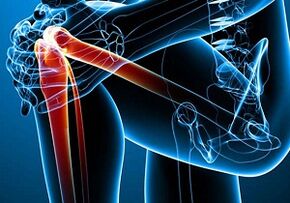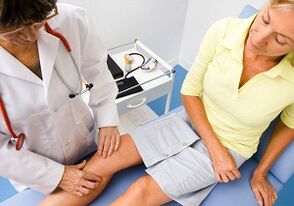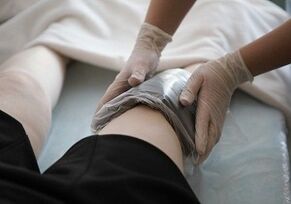People of different ages, especially after the age of 40-50, often experience joint problems, but it can be difficult to determine which disease is developing without the help of a specialist. Common diseases are arthritis and joint disease. What's the difference, how to treat it, and how to prevent joint disease?
Expert advice on the treatment of disorders of the musculoskeletal system will be useful to many people. It is important to understand how to recognize arthritis and joint disease for successful treatment.
general sign

Arthropathy has a common root in the name. Translated from Greek "arthron" means "joint".
Arthropathy and arthritis are damage to the joints. The pathological process is accompanied by discomfort, soreness, damage to cartilage tissue, restricted mobility of the problem area. Both arthritis and joint disease can disrupt a patient's daily life.
When differentiating diseases, it is important to take all the signs into account, conduct the necessary research and analysis.
There are many differences in joint pathology, and a wrong diagnosis can reduce the quality of treatment.
Basic information about joint lesions
It is important to understand not only the similar and unique signs of arthropathy and arthritis, but also the causes, types, and characteristics of the arthropathy process. Understanding the predisposing factors that initiate the onset of negative processes in cartilage tissue will help prevent disease.
| arthritis | joint | |
|---|---|---|
| reason | Inflammation against the background of systemic pathology or infection of joint tissue | Destruction of cartilage during tissue wear, more commonly in old age. Improper metabolism can lead to loss of elasticity, altered cartilage structure, abrasion, partial or complete destruction of cartilage tissue. |
| stimulus | Infectious diseases, allergies, injuries, hypothermia, disruption of metabolic processes, genetics, stress, vitamin deficiencies | Aging of the body, excess weight, injury, malnutrition, autoimmune diseases, deterioration of blood supply to cartilage and bone tissue, inflammatory processes in the body, thyroid dysfunction, joint stress, hypothermia, genetic predisposition |
| type of pathology | Monoarthritis, Polyarthritis | Primary (cartilage damage, lack of nutrients, poor circulation). Secondary - the disease develops in the affected joint, more often after an injury |
| form of disease | suppurative, rheumatoid, juvenile, gout | Four stages: From slight narrowing of the joint space to overt deformity of the joint space complete closure |
| complication | Prolonged presence of infectious agents in joints and other organs can damage health and reduce immunity. Impaired physical mobility, and during exacerbations, tissue swelling, injury, and difficulty performing many familiar movements | In the absence of treatment: complete destruction of the joint, immobilization of the limb, negative changes in the intervertebral disc |
| forecast | With prompt treatment, eliminating the inflammatory process, many types of arthritis can be completely cured. | The disease is difficult to treat and in most cases becomes chronic. Arthropathy is an irreversible process, and the quality of cartilage tissue cannot be 100% restored. Effective treatment can improve the condition of the cartilage and preserve the function of the extremities, but if certain rules are violated, the disease can progress |
What is the difference between arthritis and joint disease
Arthropathy is more variable than similar signs. Arthritis and arthropathy are easily distinguished by knowing the cause of the disease.
Information for patients:
- Arthritis develops against the background of inflammatory processes in the joints, arthropathy is a degenerative process, the result of degenerative changes in the cartilage tissue;
- Both pathologies have acute and chronic forms, but arthritis presents with more pronounced symptoms, where inflammation spreads not only to the joints but also to other areas;
- Arthropathy is a persistent disease with a long period of remission, gradual destruction of cartilage, and no severe inflammation of the tissue.
This table describes differences in joint pathology based on key features:
| arthritis | joint | |
|---|---|---|
| Cause of pathological changes | Infections that cause acute and chronic inflammation | Degenerative dystrophy changes, cartilage tissue is gradually destroyed. The main reason is the negative processes in the context of aging of the body. |
| nature of pathology | More acute than arthropathy, with remission alternating with active inflammation | Prolonged, and more commonly, sluggish, periods of exacerbation |
| Affected area | The infection extends far beyond the joint area. Monoarthritis develops (in one joint), polyarthritis (several areas are affected, eg, polyarthritis of the fingers) | Joint tissue in an area, such as osteoarthritis of the knee. Other organs are not involved in the destruction process |
| localized area | Smaller joints: wrists, fingers, hands, ankles. The knee area is also at risk | Large joints: hip, knee, big toe, and less commonly, phalanx and ankle |
| patient age | More common - up to 40 years | The main category is people aged 45 and over, more commonly people aged 55-60 |
| risk group | young people. The development of the disease is associated with dangerous bacterial and viral infections, limb injuries. Juvenile rheumatoid arthritis diagnosed in children and adolescents | Women after the age of 45-50. Degenerative processes develop in the context of menopause. In men, the changes in chondrodystrophy often occur in the context of high loads on the joints of life and difficulties associated with lifting weights, monotonous movements. |
How to tell the difference by symptoms

Pathological changes that are contagious make it easier to identify disease onset.
Arthropathy usually does not manifest itself for a long time, and usually patients seek medical attention in the second intermediate stage of the disease.
Watch for major signs of joint disease. Even mild discomfort in the joints should raise suspicions about the development of negative processes in the cartilage tissue.
Correct and timely diagnosis can help differentiate arthritis from joint disease and develop the correct treatment plan.
Arthritis symptoms:
- swelling or severe swelling in the problem area;
- reddening of the skin in the affected area;
- Inflammation of the affected joint;
- The affected area is hot to the touch, there is active inflammation, infiltration of dangerous pathogens, and generally elevated temperatures;
- Severe pain is heard when moving, throbbing, "twitching" when resting, soreness in the area of inflammation that does not go away;
- Often the infection affects other parts of the body, health deteriorates, weakness develops, and chronic diseases become more active;
- Negative processes usually occur in the fingers, hands, ankles, and less often in the knees.
Arthropathy symptoms:
- The fluctuating nature of pain. In the early stage, the pain is weak and the intensity does not increase for a long time;
- The pain gradually increases, and stiffness is heard in the problem joint in the morning;
- As dystrophic changes develop, the mobility of the affected area decreases; in advanced cases, there may be complete immobility due to cartilage destruction;
- The main sites of localization are the hip joint (coxarthrosis), the spine (spondyloarthropathy), and the knee (knee joint disease).
The main method of treating the disease
Patients often believe that a neighbor's "tested" arthritis recipe will definitely help with arthritis. Ignorance of the nature of the disease often damages the joints and worsens the physical condition.

In arthritis, for example, there is an active inflammatory process and the infection spreads over large areas of tissue. Warming up is strictly prohibited, but patients often use arthritis to warm their sore knees in the hope of healing. The results were quite the opposite: heat accelerated the development of the inflammatory process, the infection penetrated through the blood and lymph to new sites in the joints and other organs, and the disease progressed.
The main difference between the treatment of arthritis and arthropathy has to do with the nature of the pathological process. A complex of treatment regimens, use of medicines, folk methods, exercise therapy, physiotherapy is developed by a rheumatologist, orthopedist or arthrologist. In the advanced stages of arthropathy (less commonly, arthritis), the help of an orthopedic surgeon is required.
Information for patients! For arthritis, heat bandages are effective, and cold compresses are recommended to relieve arthritis inflammation.
Treatment of joint disease
The basic principle:
- The main task is to normalize the state of cartilage tissue. Doctors prescribe chondroprotective agents with hyaluronic acid, chondroitin sulfate, and glucosamine. Long-term treatment can improve the elasticity of cartilage tissue, restore blood circulation, metabolism, and stop the degenerative malnutrition process;
- In severe cases, non-steroidal anti-inflammatory drugs are needed to relieve pain and eliminate inflammation that occurs during the wear and tear of joint tissue. But as the main tool for the treatment of arthropathy, they are ineffective;
- Physiotherapy procedures, special exercises are useful;
- The patient successfully applied the traditional method. Homemade ointments, decoctions, compresses, body washes, tinctures are made from natural ingredients. Correct use of the compound can reduce pain and improve joint mobility;
- With the complete destruction of cartilage tissue, surgical treatment - arthroplasty is performed. Arthropathy cannot be cured completely, only to keep the joints healthy and prevent the disease from getting worse.
Arthritis Treatment
The basic principle:
- The first stage is the fight against pathogenic bacteria, dangerous viruses, under whose influence the inflammatory process begins. require non-steroidal anti-inflammatory drugs;
- It is important not only to destroy the pathogen of infection, but also to strengthen the immune system;
- Protein diets, vitamin therapy, dairy products are recommended. Alcohol, espresso, sweet carbonated drinks, black tea (preferably green tea) must be rejected;
- Physiotherapy results are excellent: electrophoresis with anti-inflammatory drugs, magnetic and laser therapy, therapeutic baths. After stopping the inflammatory process, the sophistication of exercise therapy, massage will help to restore the mobility of the diseased joints. Useful folk method without the use of heat.
There are significant differences between arthritis and arthropathy. Understanding the characteristics of joint disease will help the patient manage the pathological process and be competent to use all available treatments. Under the guidance of an experienced doctor, you can manage any joint pathology.


















